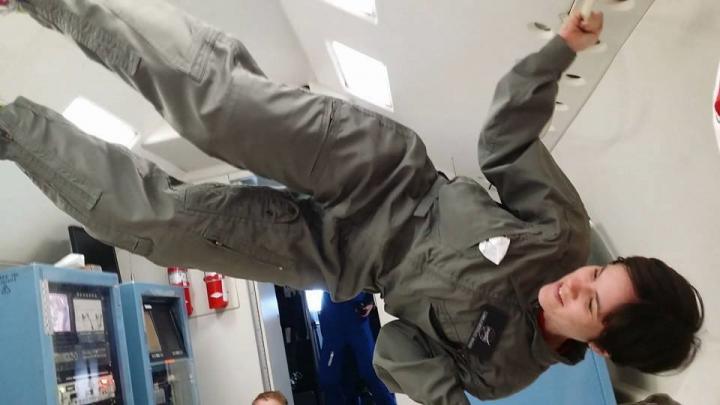Few researchers have had to overcome hurricanes and earthquakes, though, just two of the hurdles a team of chemists in Puerto Rico faced getting their investigation to the International Space Station.

Credit: University of Puerto Rico
Space is hard, the saying goes, and conducting science in space presents challenges of its own. Few researchers have had to overcome hurricanes and earthquakes, though, just two of the hurdles a team of chemists in Puerto Rico faced getting their investigation to the International Space Station.
The investigation, Elucidating the Ammonia Electrochemical Oxidation Mechanism via Electrochemical Techniques at the ISS (Ammonia Electrooxidation) examines ammonia oxidation in microgravity.
Ammonia is a small molecule made up of nitrogen and hydrogen. Oxidation is a reaction involving oxygen that breaks up these molecules, producing nitrogen gas, water, and electrical energy. A compound in human urine, urea, can be converted to ammonia, making it an easily available resource. The oxidation process then can be used to produce water and energy, both critical needs on future long-term space missions, as are ways to remove ammonia from a spacecraft or habitat.
The team previously developed the Electrochemical Ammonia Removal system, or EAR, a setup similar to a battery that oxidizes ammonia electrochemically or with an electric current. They put EAR to the test on multiple parabolic flights, which provide scientists access to short-term microgravity by putting a plane into freefall. Results showed that microgravity decreased fuel cell performance 20 to 65 percent. The researchers suspected that the absence of buoyancy in microgravity caused the decrease, but needed to conduct more research to confirm that hypothesis.
“You only have about 25 seconds on parabolic flights,” says principal investigator Carlos Cabrera, chemistry professor at University of Puerto Rico at Rio Piedras in San Juan. “So we wanted to use the space station to look at the process for a longer period of time.”
The Ammonia Electrooxidation investigation proposal received approval from NASA in 2016 under the sponsorship of the ISS National Lab. The team first had to redesign their original flight equipment, shrinking the EAR from the size of a small refrigerator to something closer to a shoebox.
That task fell to Camila Morales-Navas, a chemistry Ph.D. student at the university who had worked on the parabolic flight tests.
Then Hurricane Maria swept across Dominica, St Croix, and Puerto Rico in September 2017. Losses totaled more than $91 billion, mostly in Puerto Rico, where nearly 3,000 people died. The category 5 storm also left the island’s entire population without electricity. Five months later, a quarter of residents still lacked power.
“We had no power on campus until January 2018,” says Morales-Navas. “We can figure things out on paper, but needed power to test configurations for the smaller equipment. Fortunately, we had a power generator in our lab at the Molecular Sciences Research Center, so we kept going.”
More obstacles were yet to come. In late 2019 and early 2020, Puerto Rico experienced a series of earthquakes that once again took out the power, and the university closed until building inspections were completed. In March of this year, the global pandemic closed the campus and lab and in August, Tropical Storm Isaias knocked out power yet again.
“It’s like extreme sports, living on this island these past three years,” Morales-Navas says.
Through it all, she kept working, and by August 2020, had the smaller hardware ready. The investigation finally rode to the station on NG-14, the 14th cargo flight for Northrop Grumman’s Cygnus resupply spacecraft that launched Oct. 2.
Operation of the experiment itself presents some challenges, too.
“The buoyancy-free environment of microgravity affects the reactions in the system,” Morales-Navas says. “If the gaseous byproducts form as bubbles, it could block further reactions.”
The researchers included repeated trials in their design so that, even if bubbles affect some of the runs, they still can collect data from the others.
“Astronauts who go to Mars will need energy,” Cabrera adds. “Our objective is to bring the technology to a level of readiness for long-term missions.”
###
Media Contact
Leah Cheshier
[email protected]
Original Source
http://www.




